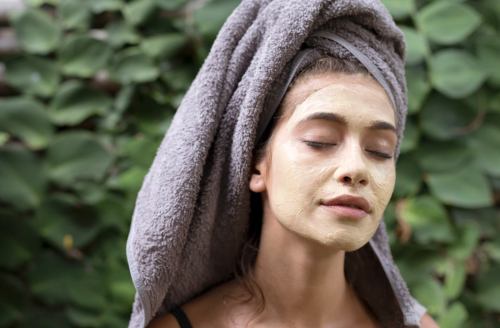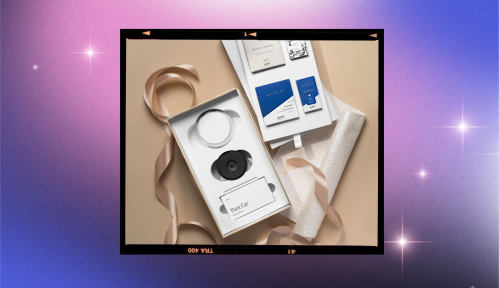For so long, a staple of a solid #selfcare Instagram has been a selfie of one’s face smothered in clay. The earth-derived ingredient has a reputation for being a buzzy face mask base that shrivels up breakouts and reveals a glowier complexion…but that’s not to say it hasn’t come with some flak.
After I once again found myself in the depths of a Reddit skin-care thread, I stumbled across someone posing the question whether clay masks are actually bad for your skin. This rang a bell in my beauty-consumed mind, as I’ve heard from certain facialists that any product that pulls your skin back or dries it out isn’t doing your complexion any favors. And so, I set upon an investigative journey.
“People with drier skin may find [clay masks] too drying and irritating, whereas people with oilier skin find them helpful to prevent clogging,” one Redditor writes. “I don’t think they are inherently bad, although it’s not advisable to use them too often.” Others agree, noting that sensitive skin types should avoid letting the masks fully dry on their skin—otherwise, your skin can get irritated and, well, too dry.
A facialist’s take? They’re onto something. “The one thing pretty much everyone gets wrong about a clay face mask is letting it dry completely,” says Sharon McGlinchey, celebrity facialist and founder of MV Skincare. “Everyone does it and most likely believes that very tight sensation they feel after removal is a firming action. It is not!”
This Parisian Skincare Brand Is Launching in the United States for the First Time—Here’s What a Derm Wants You to Know

We’re Calling It: Cleansing Balms Are the Face Wash of the Future—Here Are 3 to Add to Your Cart

This Is the One Product That Scarlett Johansson Always Keeps in Her Purse and on Her Bedside Table

“The one thing pretty much everyone gets wrong about a clay face mask is letting it dry completely.” —Sharon McGlinchey, celebrity facialist
I’ve been guilty of this—that drying action can be so satisfying, as if its sucking up all the gunk in your pores—but McGlinchey says it’s not doing your skin any favors. “The final drying stage of a clay mask draws moisture from the surface of the skin, leaving it blotchy,” she explains.
To combat this drying dilemma and use the clay for its nourishing benefits—which include infusing your skin with minerals and absorbing excess oil—McGlinchey says that there are three phases to pay attention to when doing the facial mask treatment: “The first two phases are beneficial for the skin: the damp phase, which is when the most beneficial minerals can absorb, and the beginning of the drying phase, which is cooling and a little like exercise for your skin,” she says. Avoid the third step, though: “The dry phase is when the clay draws moisture back from the surface of the skin.”
It’s especially bad news if you’ve got a reactionary or dry skin type. “For those with sensitivity, the drying phase is a disaster—the skin often looks red and blotchy as well as feeling very uncomfortable,” says McGlinchey. “If you’re dry or dehydrated already, this only exacerbates the problem.”
To glean the skin-boosting action instead, remove the clay mask at the “perfect” time: “Just as it’s drying around the edges of the face, nose, eyes, and lips, and is still damp across the cheeks and forehead,’ she says.
Now that you know the magic rule, know that the color of your clay mask can help point out which skin type it’s best for. “White clay can be used by pretty much everyone as it’s the most gentle and has a high silica content,” says McGlinchey. “Green clay is generally used for more oily, combination, and acne-prone skin, pink and red for more normal skin and the lesser known yellow clay is beneficial for sun damaged and dull skin.” So now you can rock that mud like a pro.
For other ways of getting healthy skin, try this complexion-boosting foods or slather on these light moisturizers for fall.
Sign Up for Our Daily Newsletter
Get all the latest in wellness, trends, food, fitness, beauty, and more delivered right to your inbox.
Got it, you've been added to our email list.








